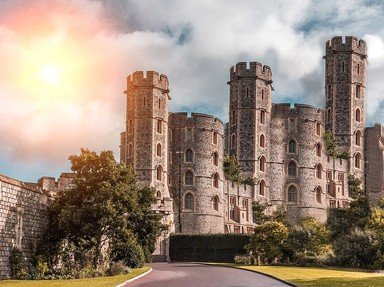Quiz Answer Key and Fun Facts
1. The building of this huge castle, built by King Edward 1 on the north Wales shoreline near to the island of Anglesey, was started in 1283. It still dominates the local area today. The very first Prince of Wales was born here.
2. This magnificent castle was built by King Edward I near the town of Llandudno. It still retains a well preserved wall around the castle and the town at its foot. It is said to be one of the most impressive castles in Wales.
3. This is another great castle created by King Edward I forming part of the "iron ring" of castles built with the intention of preventing any sort of resistance from the Welsh populace. A famous Welsh song commemorating a seven year siege of this castle was given a prominent place in the 1964 film "Zulu".
4. This castle near Welshpool in Powys, came into the hands of the Royalist Herbert family in 1578. In 1644, it was taken by the Parliamentary forces during the English Civil War. Restored later to the Herberts, it became the home of the son of Sir Robert Clive when George Herbert died in debt in 1801.
5. This castle in northeast Wales was built over 700 years ago and has magnificent gardens. In 1563, it became the home of Robert Dudley, who was created Earl of Leicester shortly after. He was a favourite of Queen Elizabeth I. Part of Offa's Dyke, a huge 8th century earthwork which roughly follows the border between England and Wales runs through the estate.
6. This castle is in the centre of a large city. A Roman fort was originally on the site. A Norman castle, probably made of wood, was built there around 1091 and a stone keep was constructed on top of a hillock in the 12th century which still survives today. The castle ownership passed through several noble families until it became the property by marriage of the Bute family in 1776. They made considerable changes to the castle but it was the 3rd Marquess of Bute who really made the changes we see today. In 1866 the 3rd Marquess and the architect William Burgess created an amazing home in the castle with each room having its own unusual theme. The early Roman wall was also restored. The Bute family continued to live there until the 1930s and then gave it and the surrounding parkland to the city in 1947.
7. This important Norman castle in southeast Wales was started in 1067 and was possibly the first stone castle in the country. William the Conqueror, who had been crowned King only the year before, used it to launch his offensive into Wales. Today, the town around it is perhaps best known for a horse-racing track.
8. This castle in southwest Wales was founded in 1093 by the Normans. Originally an earthen/wooden castle it was rebuilt in stone at the end of the 12th century with walls around 70 feet tall. The site is a rocky outcrop with water around it which meant it could only be attacked by land from a narrow strip.
9. This castle in South Wales, about nine miles to the North of Cardiff, was built in the late 13th Century by Gilbert de Clare. Its most recognisable feature today is the leaning southeast tower which is believed to be the result of subsidence.
10. This castle was built on the island of Anglesey by King Edward I. Work started in 1295. Its classic concentric design is perhaps the best example of its type in Britain.
Source: Author
Spontini
This quiz was reviewed by FunTrivia editor
stedman before going online.
Any errors found in FunTrivia content are routinely corrected through our feedback system.


